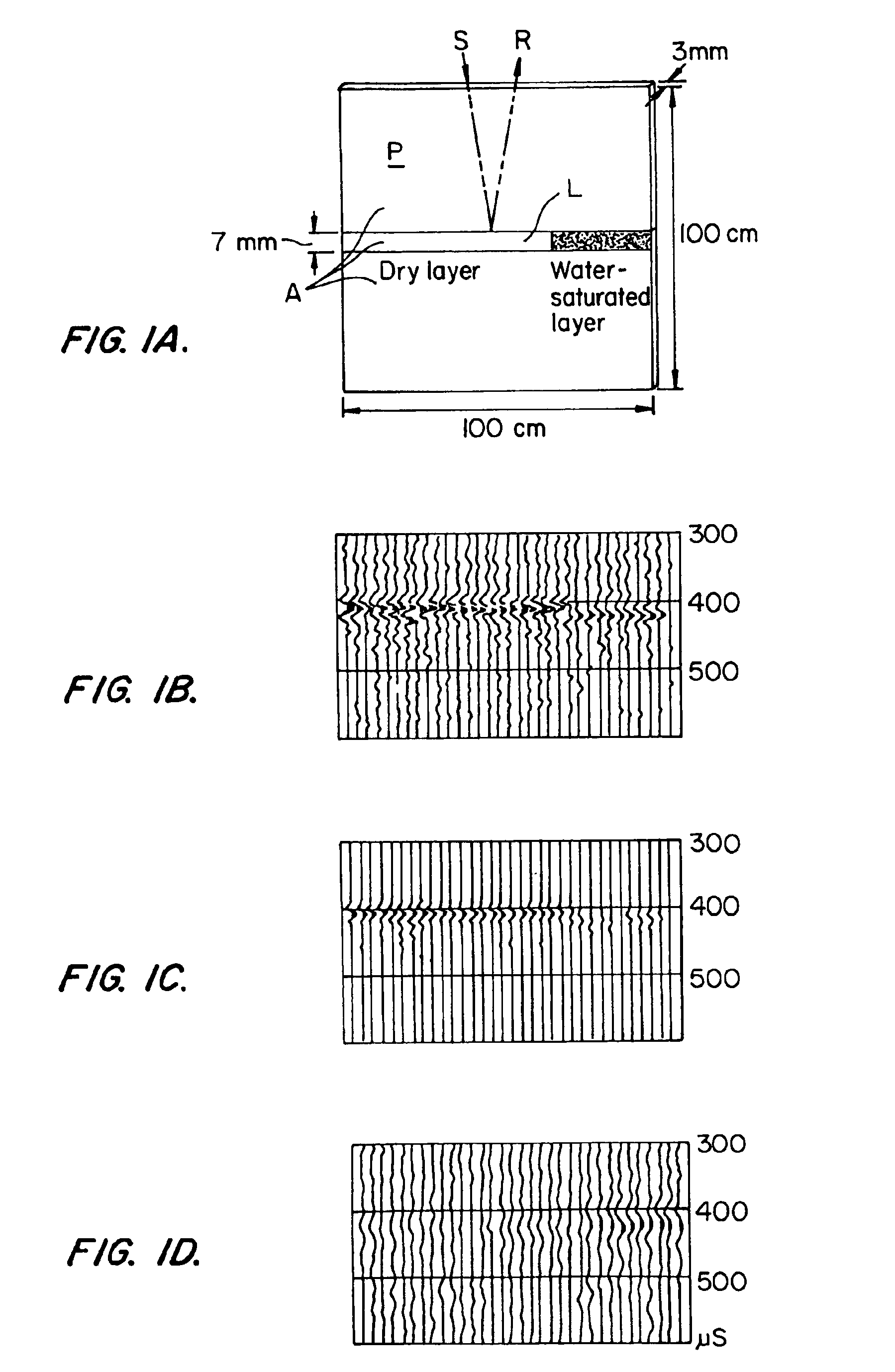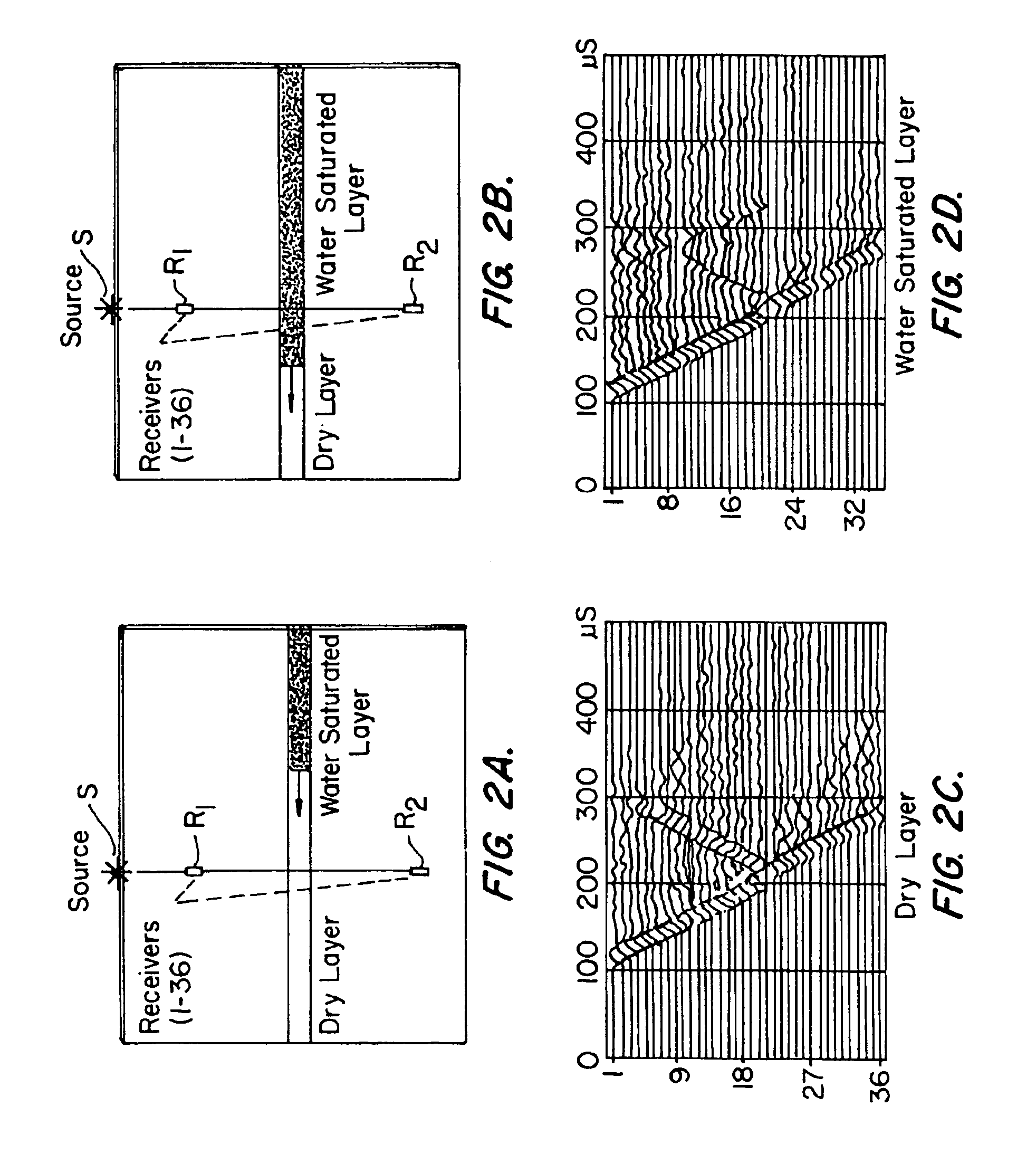Frequency-dependent processing and interpretation (FDPI) of seismic data for identifying, imaging and monitoring fluid-saturated underground reservoirs
- Summary
- Abstract
- Description
- Claims
- Application Information
AI Technical Summary
Benefits of technology
Problems solved by technology
Method used
Image
Examples
Example
Defined Terms
[0044]Computer: any device capable of performing the steps developed in this invention to result in an optimal waterflood injection, including but not limited to: a microprocessor, a digital state machine, a field programmable gate array (FGPA), a digital signal processor, a collocated integrated memory system with microprocessor and analog or digital output device, a distributed memory system with microprocessor and analog or digital output device connected with digital or analog signal protocols.
[0045]Computer readable media: any source of organized information that may be processed by a computer to perform the steps developed in this invention to result in an optimal waterflood injection, including but not limited to: a magnetically readable storage system; optically readable storage media such as punch cards or printed matter readable by direct methods or methods of optical character recognition; other optical storage media such as a compact disc (CD), a digital versat
PUM
 Login to view more
Login to view more Abstract
Description
Claims
Application Information
 Login to view more
Login to view more - R&D Engineer
- R&D Manager
- IP Professional
- Industry Leading Data Capabilities
- Powerful AI technology
- Patent DNA Extraction
Browse by: Latest US Patents, China's latest patents, Technical Efficacy Thesaurus, Application Domain, Technology Topic.
© 2024 PatSnap. All rights reserved.Legal|Privacy policy|Modern Slavery Act Transparency Statement|Sitemap



